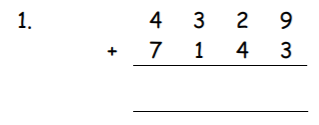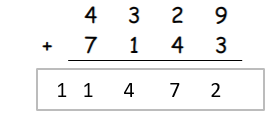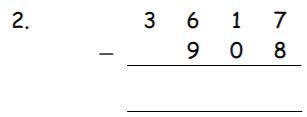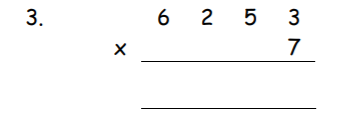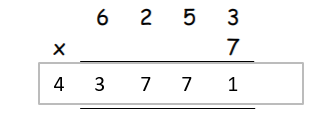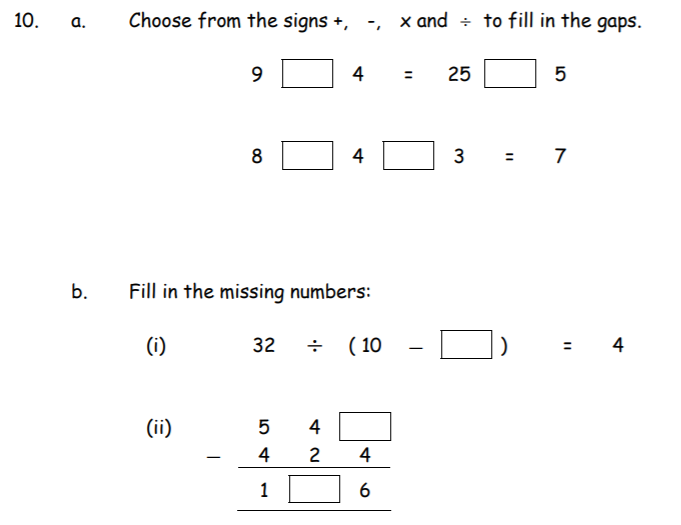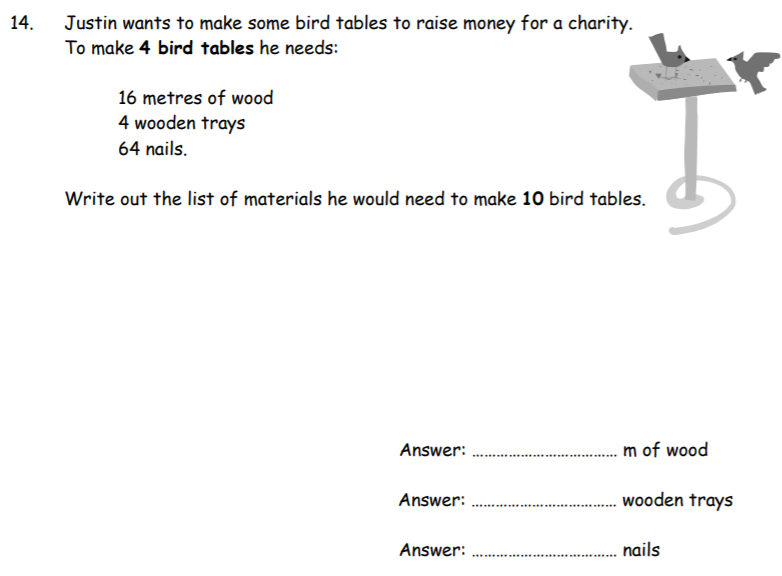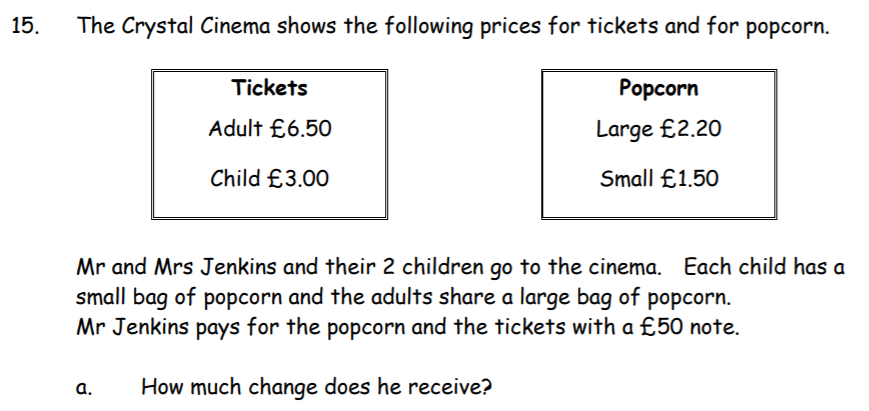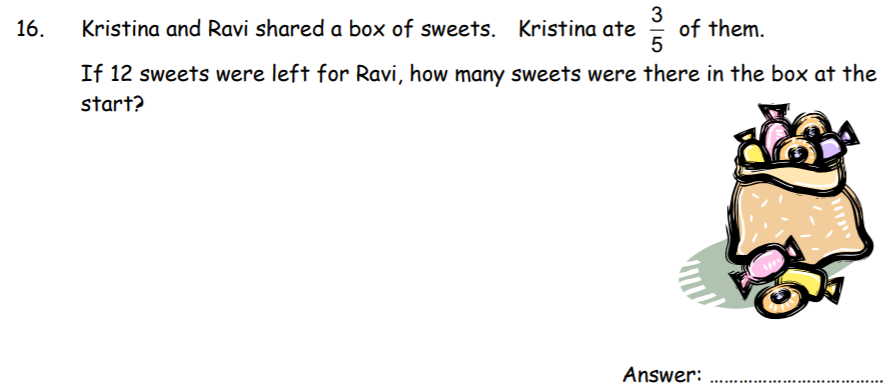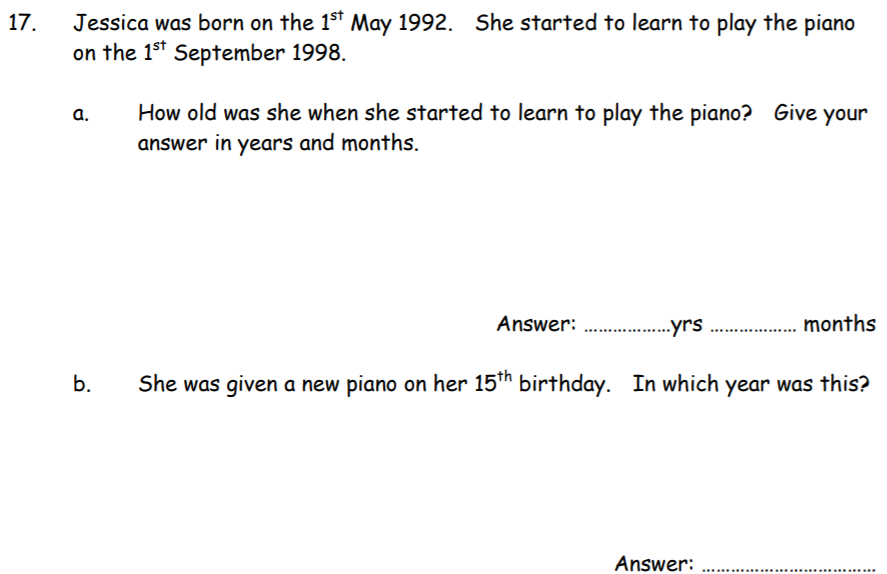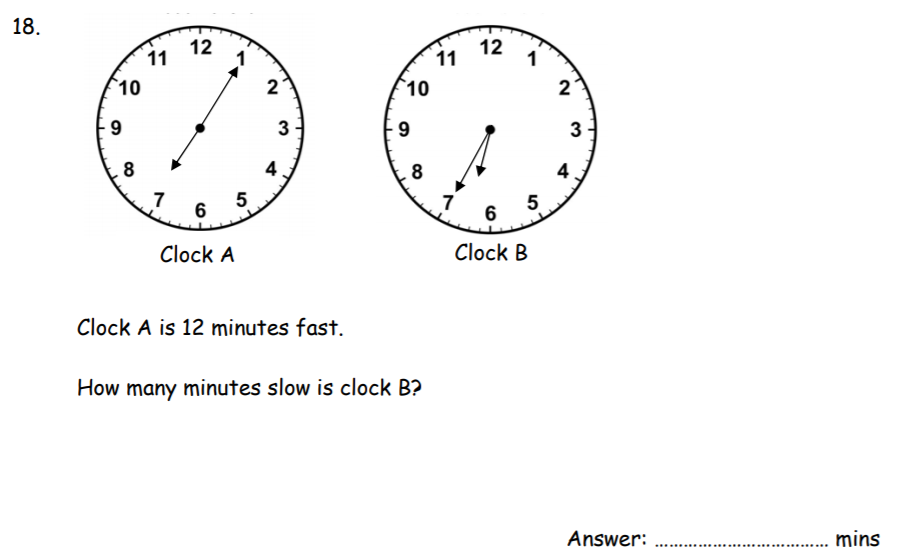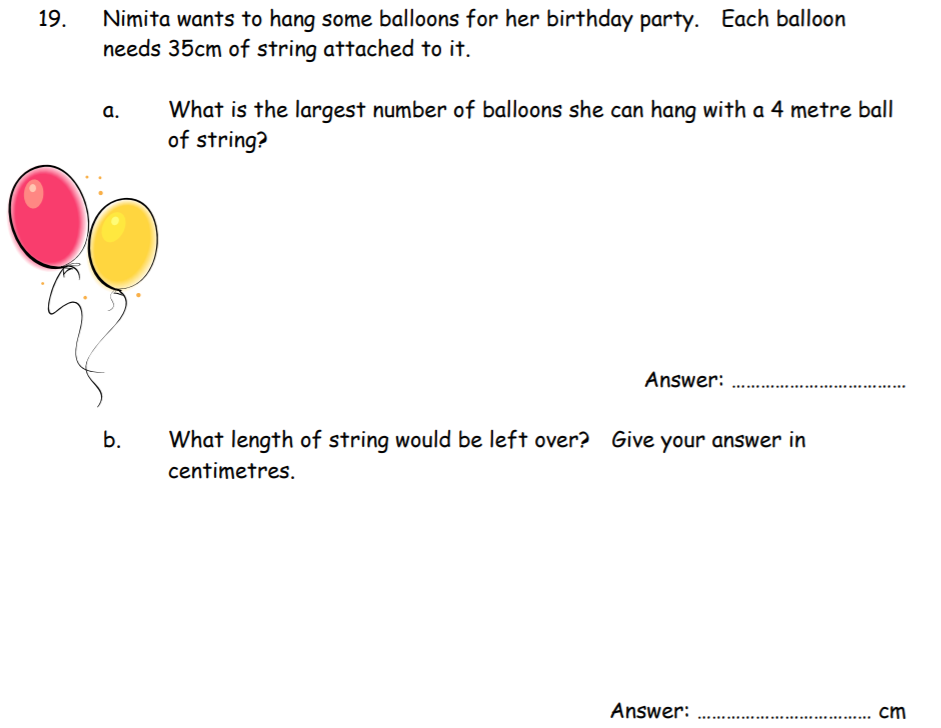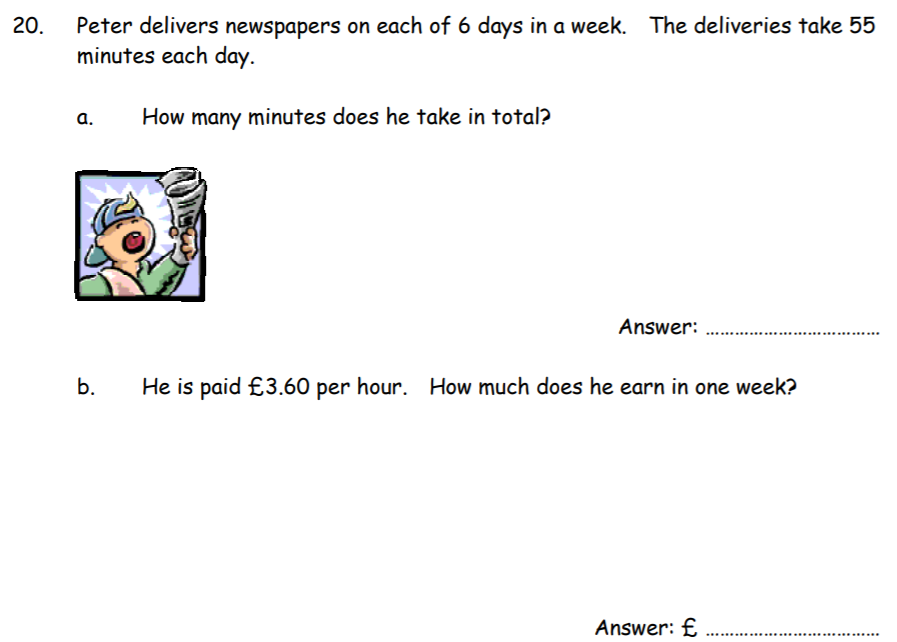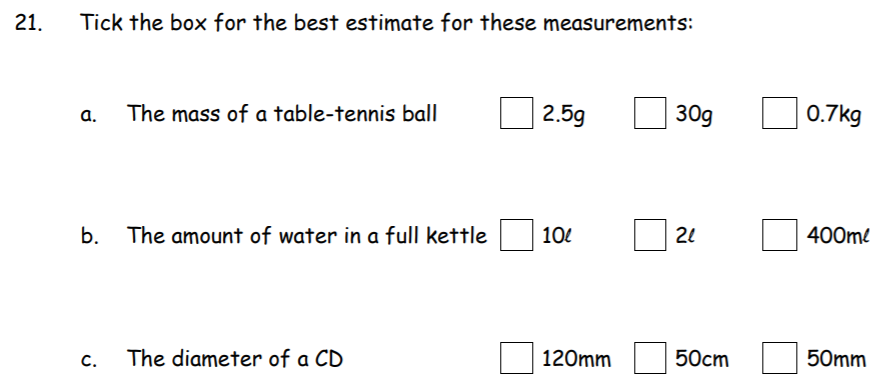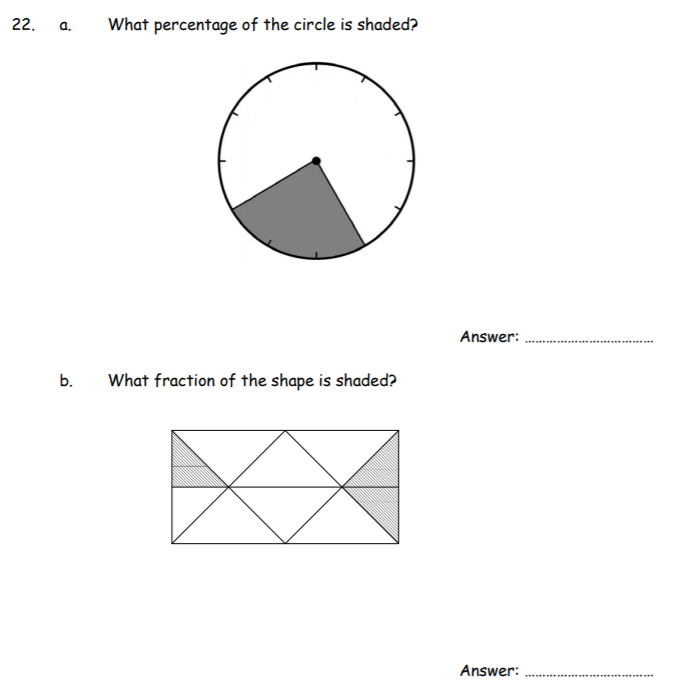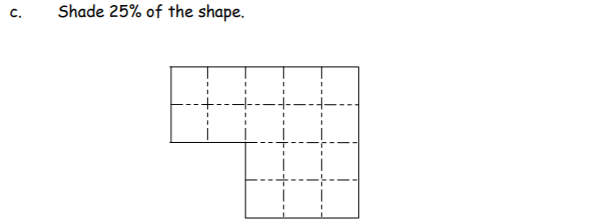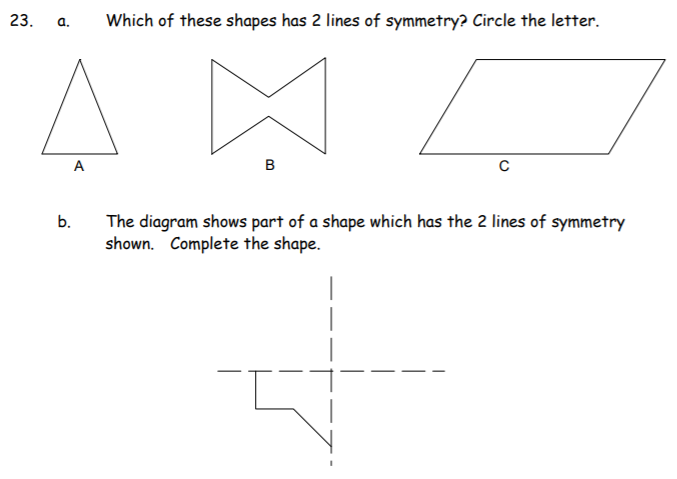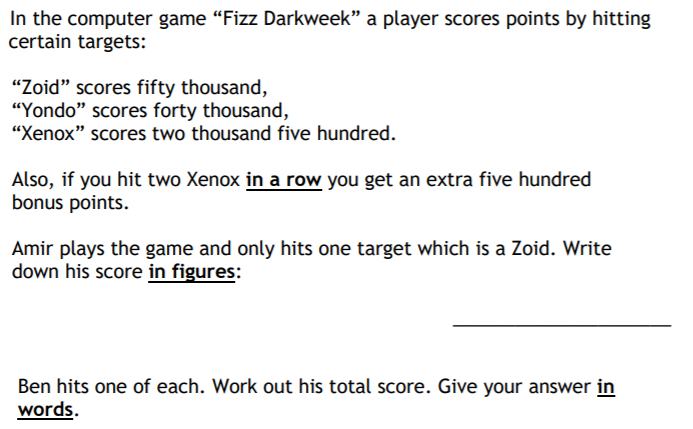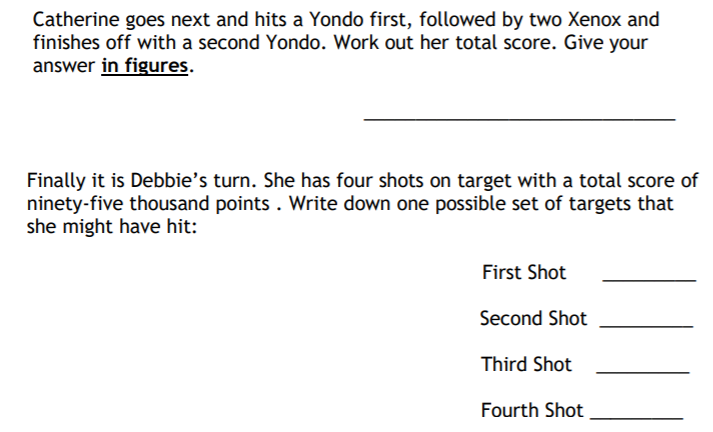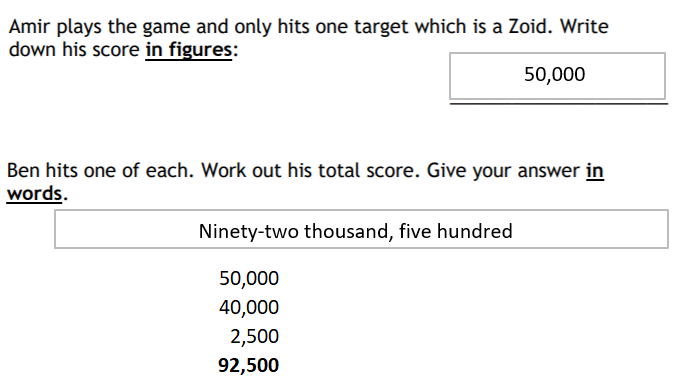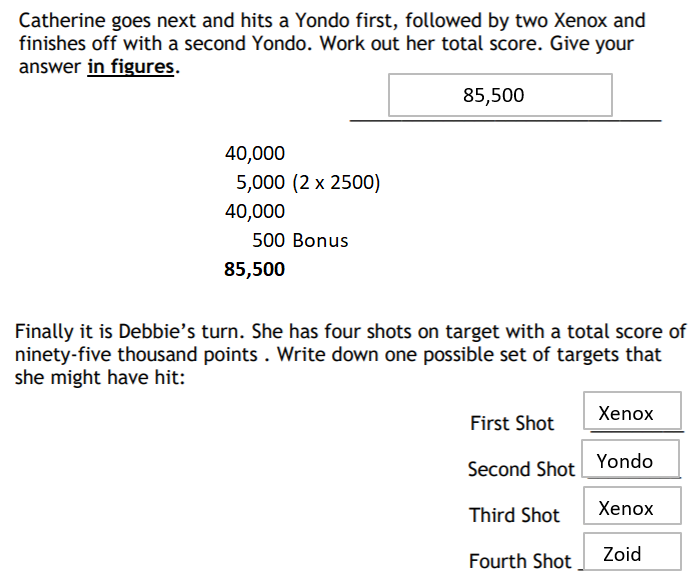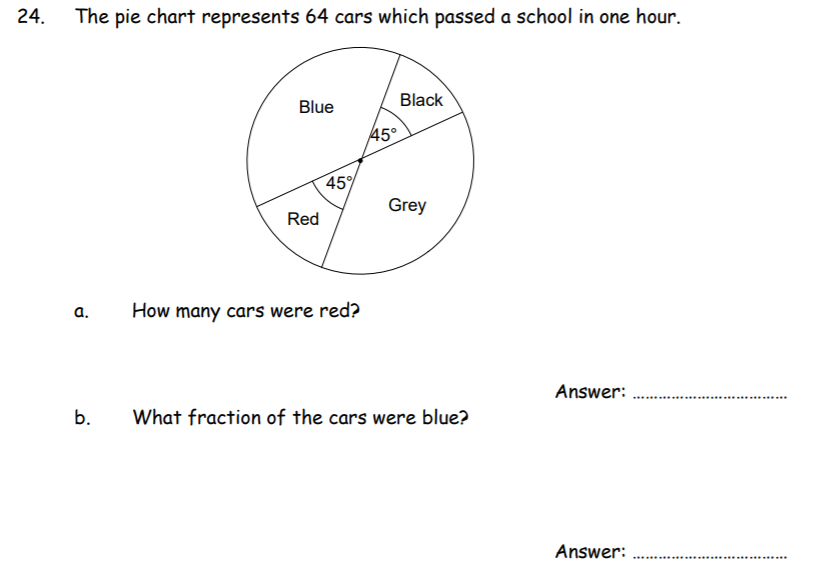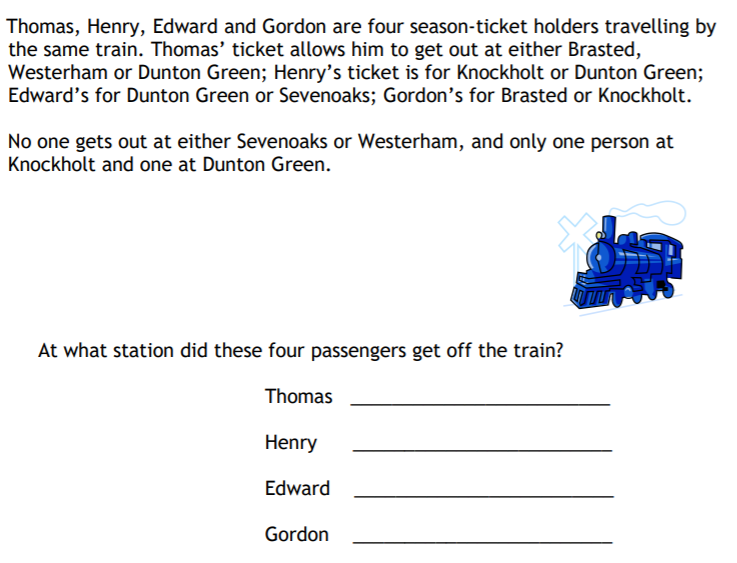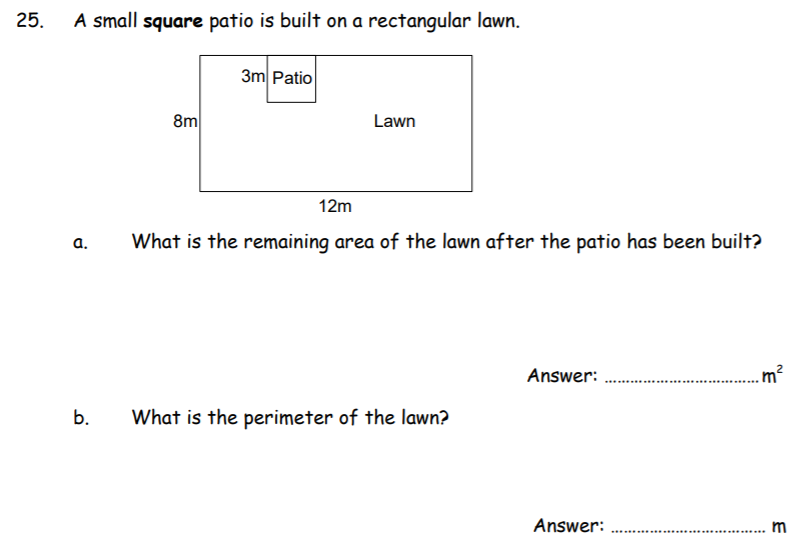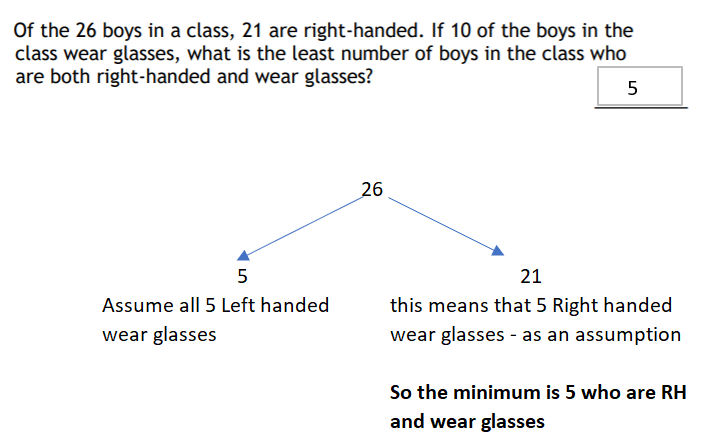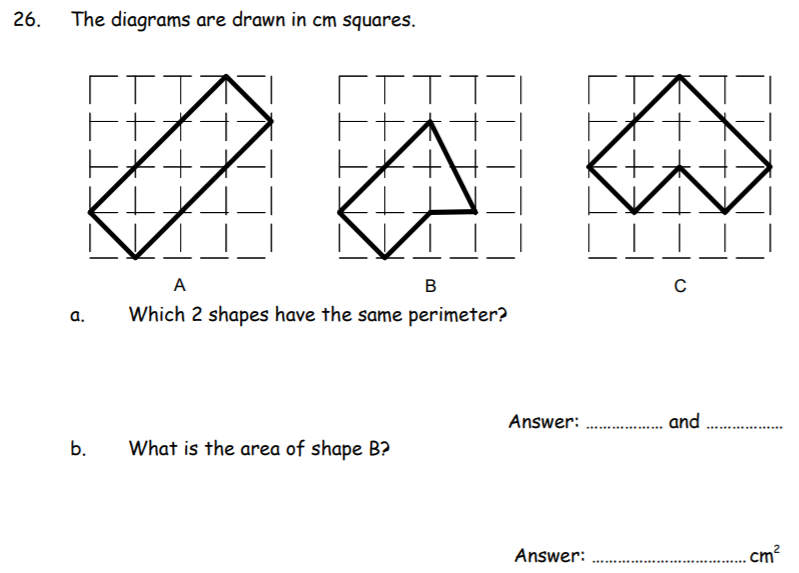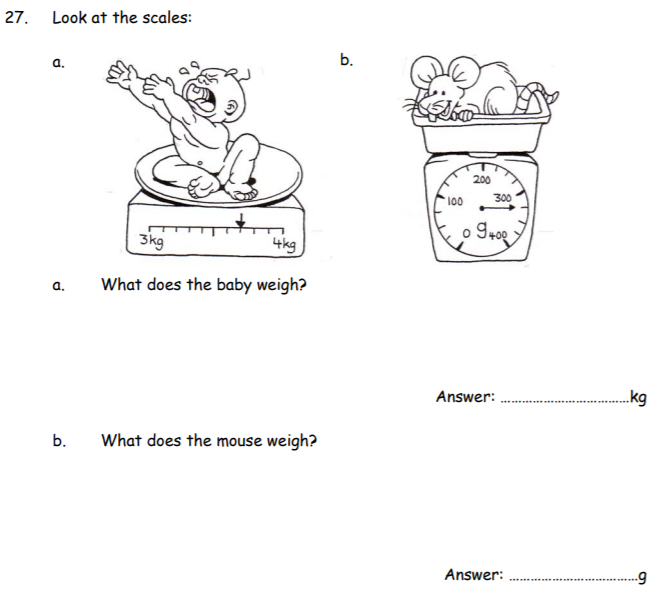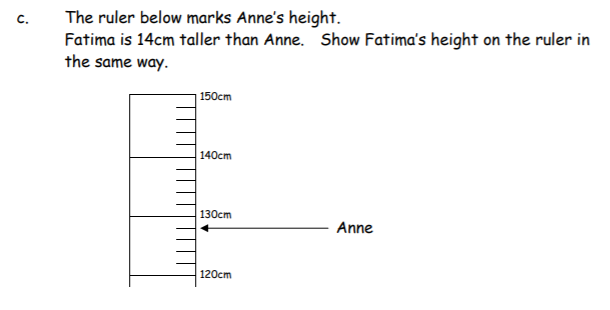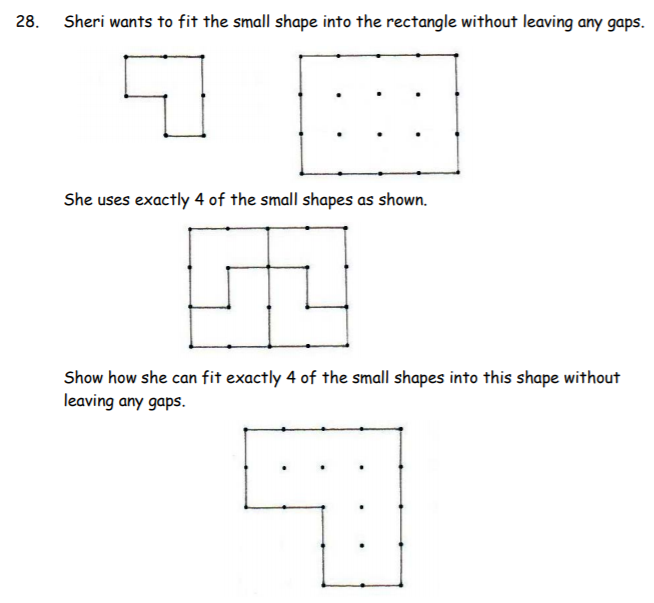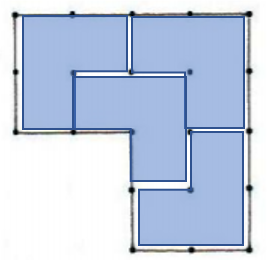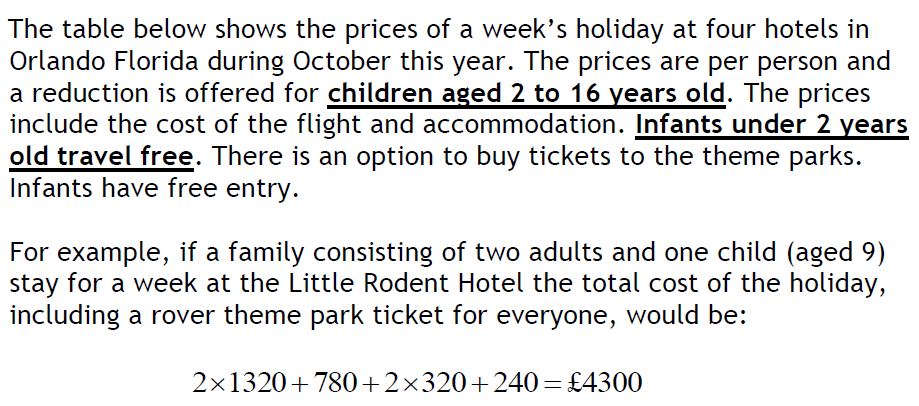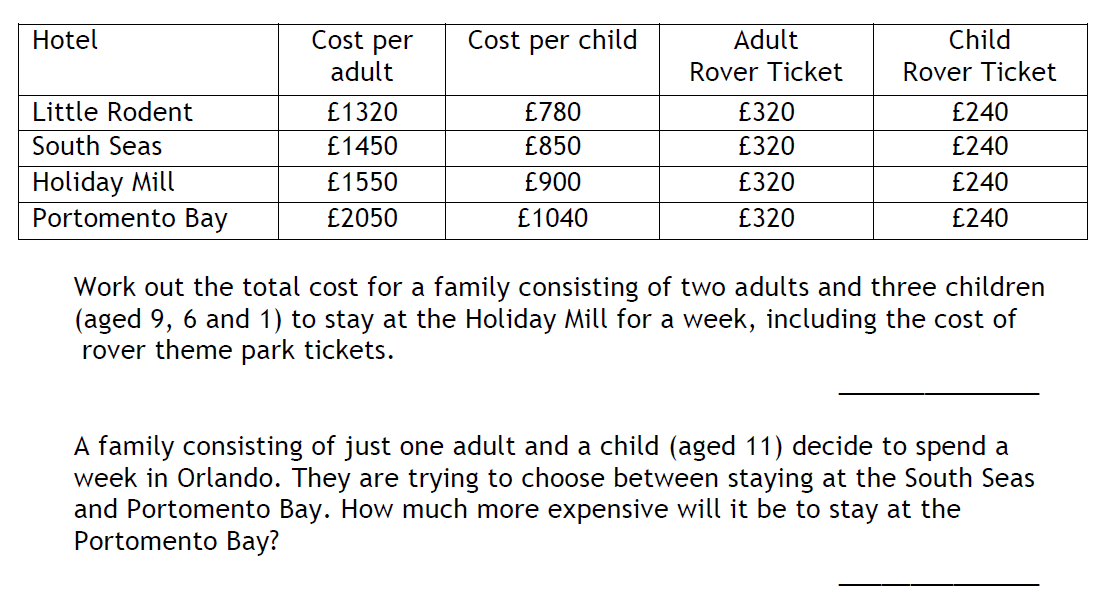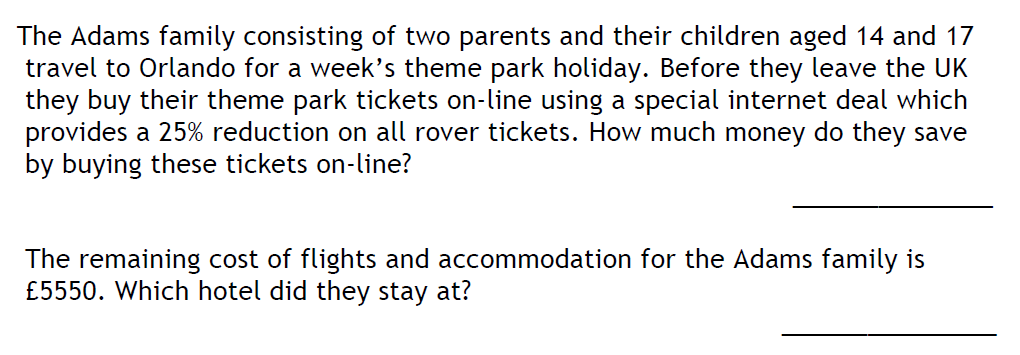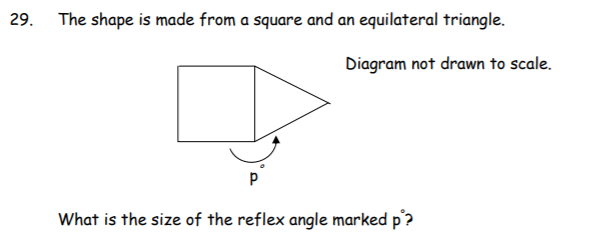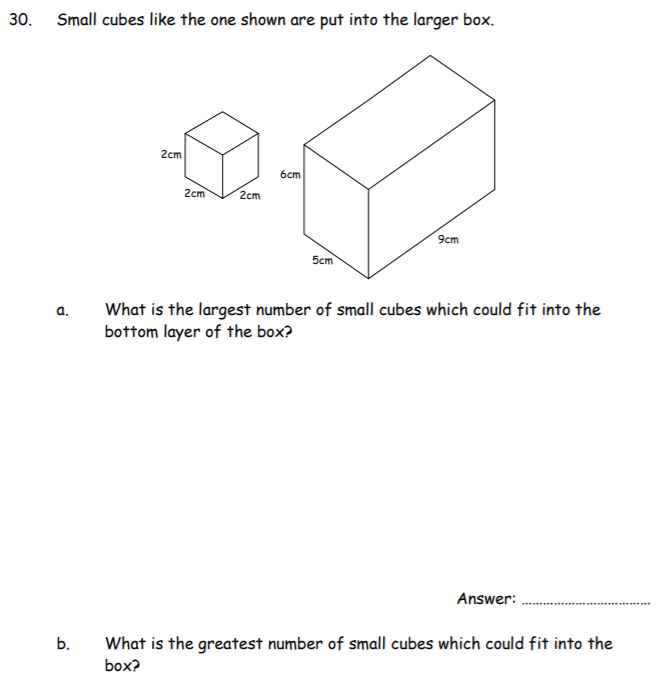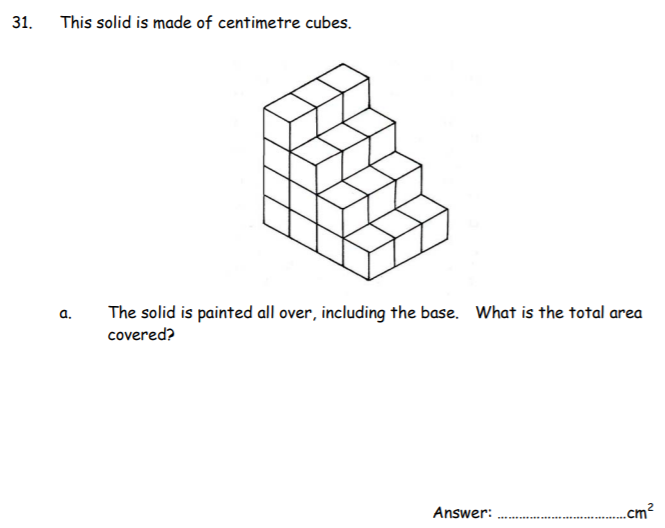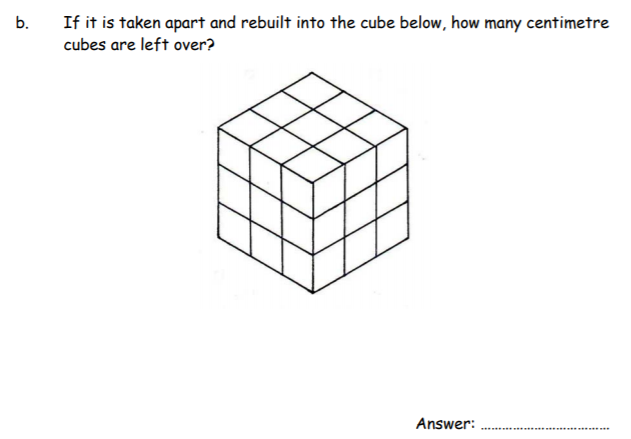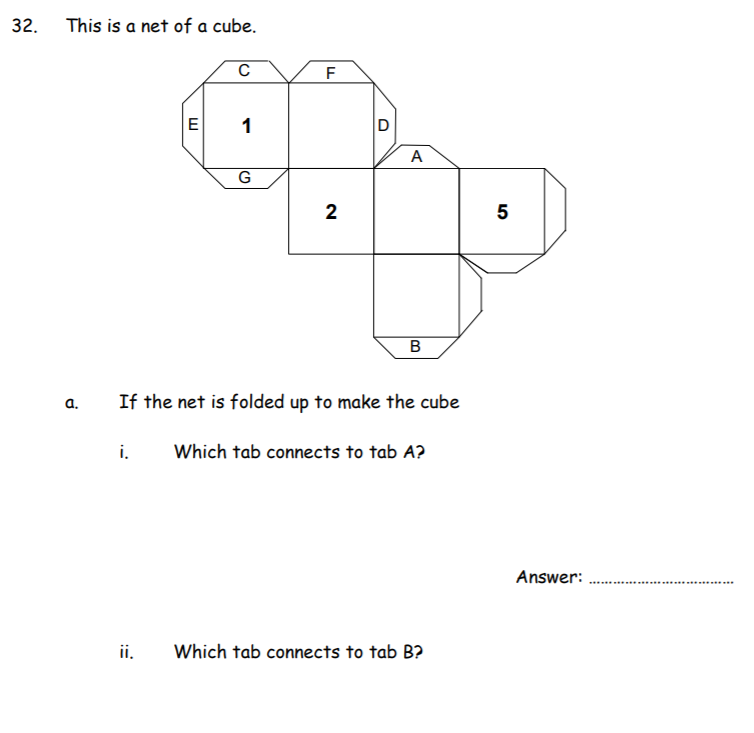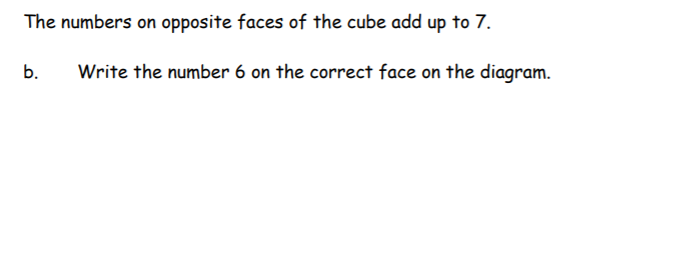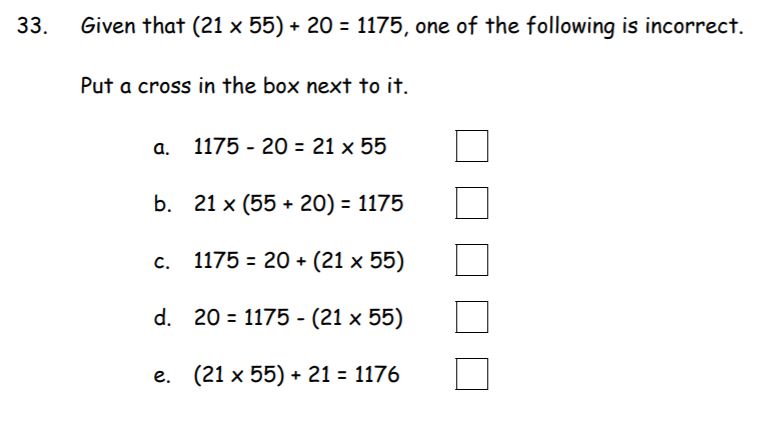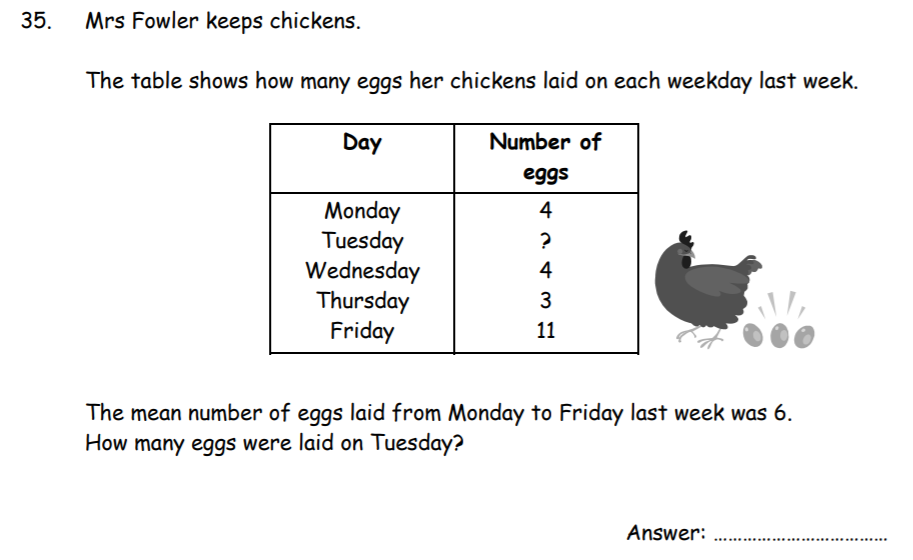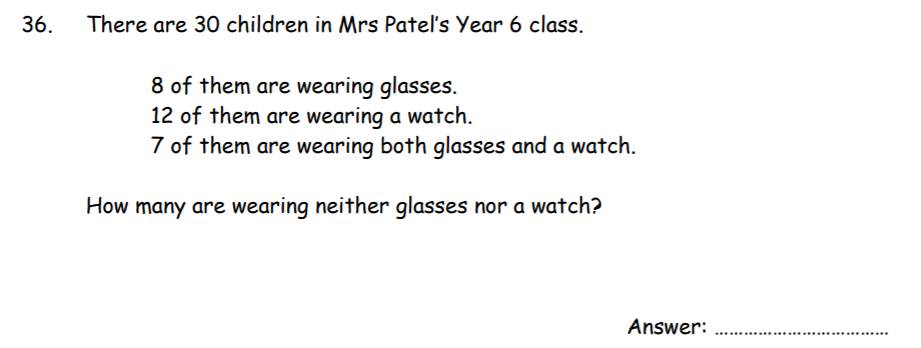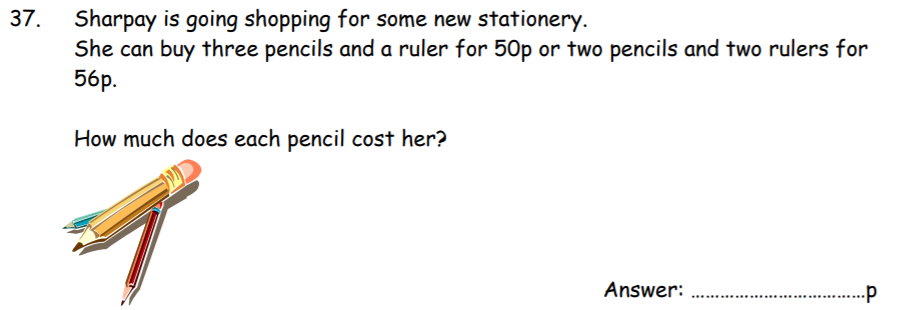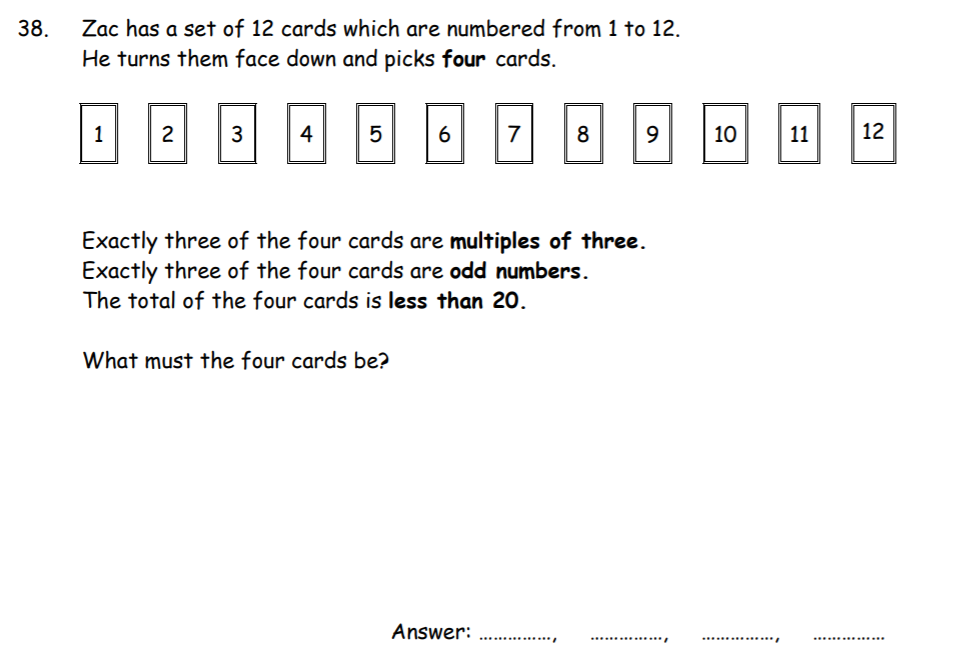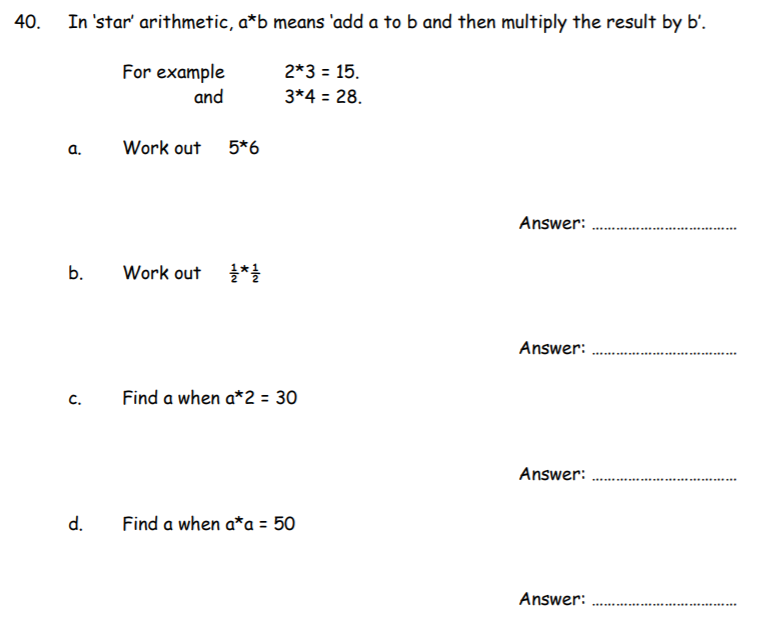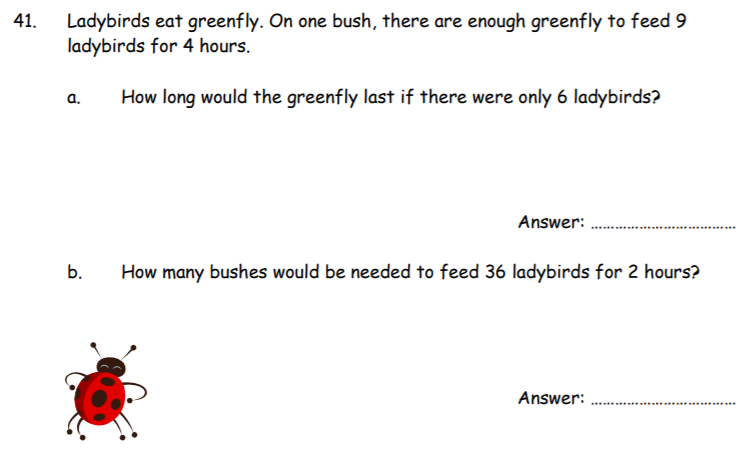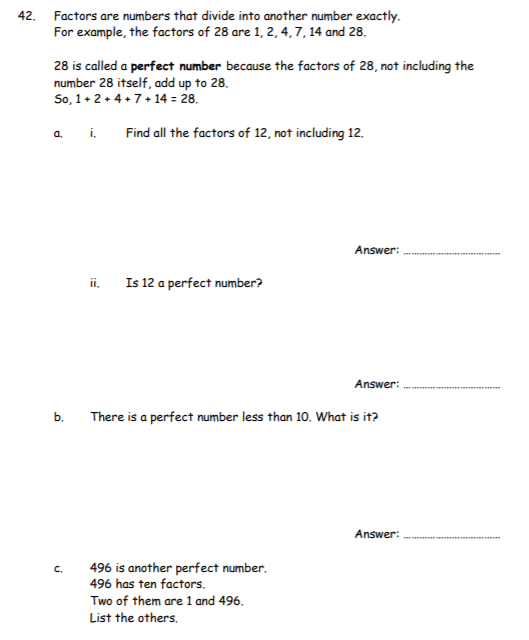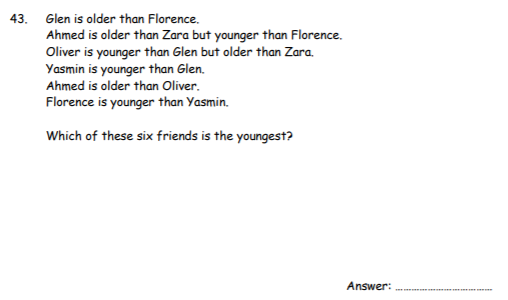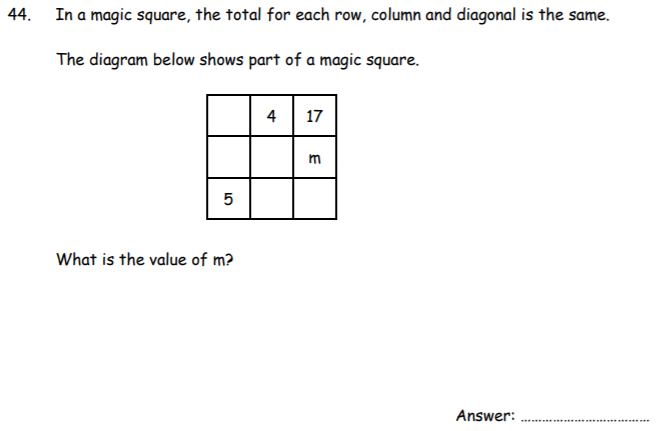Would you like to see similar questions? Click on one of the links below:
Would you like to see similar questions? Click on one of the links below:
Would you like to see similar questions? Click on one of the links below:
536
Use bus stop method if needed
Would you like to see similar questions? Click on one of the links below:
2/5 1/2 5/8
- Convert all fractions to the lowest common denominator
- The LCD of 5, 8 & 2 is 40. Always easiest to work by going through the highest of the 3 numbers. So count in 8s
- Revised fractions are as per follows so it now becomes much easier to rank these:
16/40 25/40 20/40
Would you like to see similar questions? Click on one of the links below:
18
Work these questions always with the following approach:
3/8 * 48/1
Then simplify to:
3/1 * 6/1
Easier to get to the answer of 18
Would you like to see similar questions? Click on one of the links below:
7. Fill in the next number in these patterns:
5.5, 5.8, 6.1, 6.4, _____
3, 6, 12, 24, _____
6.7 , 48
Sequence Questions. You should always mark clearly what each sequence is moving up in. So in the first case, its going up in “0.3s”
So the next number will be 6.7
For the second one, the pattern is that the numbers are doubling. So the next number will be 48
The trick with these questions is to analyse the change number on number as the key takeaway
Would you like to see similar questions? Click on one of the links below:
8. Which of the following numbers is closest in value to 1 ?
1.1, 0.988, 1.009, 0.99, 1.01
1.009
If not sure, put the numbers in column format like below:

Would you like to see similar questions? Click on one of the links below:
9. If two numbers multiply to give 36 and the,ir difference is 5, what are the two numbers?
9 & 4
- The way to tackle this question is think of multiples of 36. This would be 1,2,3,4,6,9,12,18,36
- The 2 numbers with a difference of 5 are 9 & 4
Would you like to see similar questions? Click on one of the links below:
a) See below
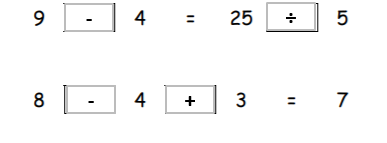
b) See below
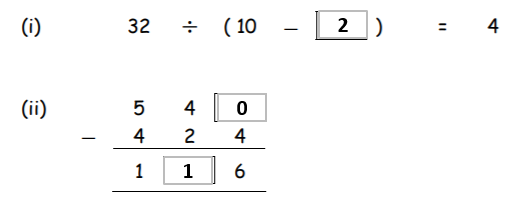
Would you like to see similar questions? Click on one of the links below:

Convert all the cards to the same metric if that helps to evaluate
Would you like to see similar questions? Click on one of the links below:
12. Alisha wants to exchange the coins in her money box for £5 notes. She has
Twelve 50p coins
Eighteen 20p coins
Seven 10p coins
Twelve 2p coins
a. What is the greatest number of £5 notes she could receive?
Answer: ………………………………
b. How much more money does she need to receive another £5 note?
Answer: ………………………………
a) 2
12 x 50p = £6.00
18 x 20p = £3.60
7 x 10p = 70p
12 x 2p = 24p
Total = £10.54
b) £4.46
If she has spent £10.54, she would need to spend a further £4.46
Would you like to see similar questions? Click on one of the links below:
13. Tasha thinks of a number, multiplies it by 3 and then adds 8. Her answer is 35. What is the number she first thought of?
9
Work backwards:
35 – 8 = 27. Divide by 3 = 9
Would you like to see similar questions? Click on one of the links below:
40 metres; 10 wooden trays; 160 nails
The approach:
- There are 2 approaches.
- Work out what it would be for 1 bird table and then multiply up by 10 to get the total for 10 bird tables. However, this approach means that you start to deal in decimals as you would need 0.4 wooden trays per bird table. This can sometimes cause errors down the line
- Therefore, the approach I advocate is HCF.
-
- Look at the core numbers which is that you have the “requirements” for 4 bird tables and need to work out what is required for 10
- The HCF of 4 & 10 is 2
- Therefore, calculate what is needed for 2. In this case, that would be halving what you need for 4.
- So for 2 you need 8 metres of wood, 2 wooden trays and 32 nails
- Then work out “how many batches of 2s” you need to get for the required 10 tables
- So this is 5 batches
- The answer becomes (5 * 8 metres of wood); (5 * 2 wooden trays) and (5 * 32 nails)
Would you like to see similar questions? Click on one of the links below:
a) £25.80
- Cost of Tickets – 2 Adults + 2 Children. (£6.50 x 2) + (£3.00 x 2) = £19
- Popcorn – 2 Small bags + 1 Large Bag. (£1.50 x 2) + (£2.20) = £5.20
- Total Cost is £24.20
- Change is therefore £50.00 – £24.20
b) 1 hour 5 minutes
- 14:30 + 3 hours = 17:30.
- So 17:30 less 16:25 leaves 1 hour 5 minutes
Would you like to see similar questions? Click on one of the links below:
30
A classic question on the concept of fractions. If Ravi is left with 12 sweets and this equals 2/5, then you have to calculate what 1/5 equals. This is 12/2 so it equals 6 sweets
Therefore, each 1/5 = 6 sweets. There were therefore 30 sweets to start with in the box
Would you like to see similar questions? Click on one of the links below:
a) 6 Years 4 Months
1998 less 1992 = 6 years
1st Sept less 1st May = 4 months
b) 2007
15th birthday will be 1992 + 15 = 2007
Would you like to see similar questions? Click on one of the links below:
18 minutes slow
- Clock A says 7:05. If it is 12 minutes fast, then the actual time is 6:53.
- Clock B is currently 6:35.
- Therefore, Clock B is 18 minutes slow
Would you like to see similar questions? Click on one of the links below:
a) 11 balloons
- Always best to convert to the same denomination.
- If she has a 4metres, then this is 400cm. Each string 35cm, then the total is 400/35 = 11.4
- Total number of balloons = 11
b) 15cm
- 11 balloons would take 11 x 35cm of string
- This is 385cm
- Therefore, 15cm is left over
Would you like to see similar questions? Click on one of the links below:
a) 330 minutes
6 x 55 minutes = 330 minutes
b) £19.80
- 330 minutes / 60 = 5 hours 30 minutes
- Per Hour = £3.60.
- Therefore £3.60 x 5.5 hours = £19.80
Would you like to see similar questions? Click on one of the links below:
a) b) c) See below
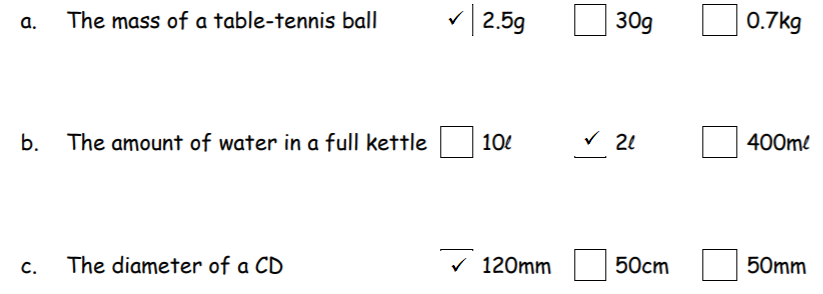
Would you like to see similar questions? Click on one of the links below:
a) 25%
- Firstly count the number of segments. There are 12 segments
- 3 of the segments are shaded
- Therefore in total, 3/12 are shaded = 25%
b) 3/16
- Each Large Triangle is equivalent to 2 small triangles
- There are 3 small triangles shaded out of a total of 16

c) See below
- 16 squares altogether
- 4/16 = 25% shaded
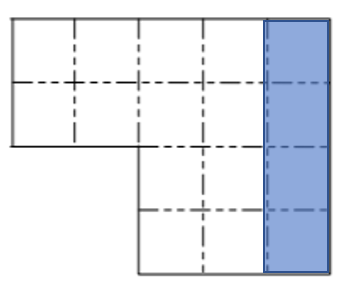
Would you like to see similar questions? Click on one of the links below:
a) b) See below
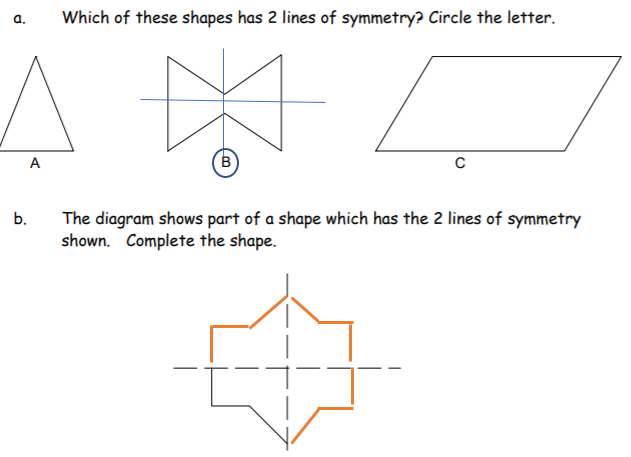
Would you like to see similar questions? Click on one of the links below:
Would you like to see similar questions? Click on one of the links below:
a) 8
-
-
-
- If 64 cars in total, then the following equation will be used to calculate the number of red cars
- 64/1 * 45/360.
- After cross cancellation, this is simplified to:
- 64/1 * 5/40
- Further cross cancellation:
- 8/1 * 1/1
b) 3/8
- The key here is to remember that the opposite angles when 2 lines cross, create equal angles
- So given Black and Red are 45º each, this gives 90° in total
- So remaining in the circle is 360 – 90 = 270
- Each angle must therefore be 270/2 = 135
- Every 45 degrees = 1/8th. So 135 = 3/8
Would you like to see similar questions? Click on one of the links below:
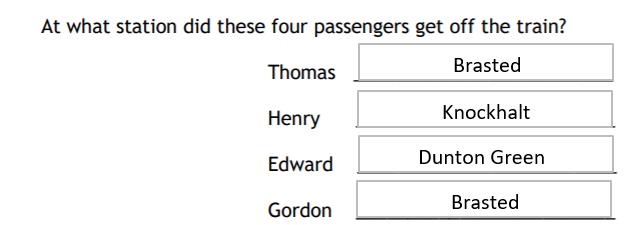
Need to work through each person to understand the possible options:
Thomas – Brasted, Westerham or Dunton
Henry – Knockholt or Dunton
Edward – Dunton or Sevenoaks
Gordon – Brasted or Knockholt
Would you like to see similar questions? Click on one of the links below:
a) 87m²
- The area of the lawn is 96m² (12 x 8)
- The patio will take 3 x 3 = 9m²
- Therefore, the remaining area of the lawn is 96 – 9 = 87m²
b) 40m
- The perimeter of the lawn is 2 x (12 + 8) = 40m
Would you like to see similar questions? Click on one of the links below:
Would you like to see similar questions? Click on one of the links below:
a) A & C. Both have a perimeter of 8

b) 4cm²
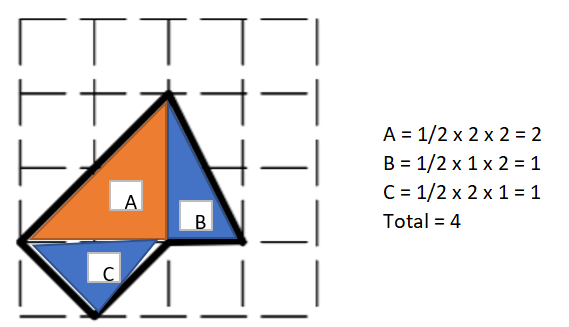
Would you like to see similar questions? Click on one of the links below:
a) 3.7kg
- Important with these questions to recognise what each marker is worth
- In this case, we start at 3kg and finish at 4kg
- There are 10 markers in between so each marker is 100g….OR 0.1kg
- Baby therefore weights 3.7kg
b) 325g
- Same process as above. Work out each marker
- Each marker is 25g
- So the mouse weighs 325g
c) 142cm on the ruler
- Again recognise what each marker is worth. In this case its 2cm per marker
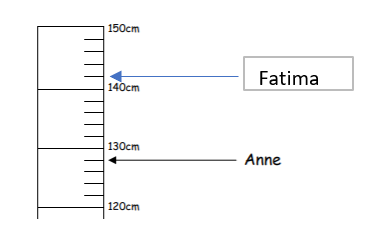
Would you like to see similar questions? Click on one of the links below:
Would you like to see similar questions? Click on one of the links below:
Total Cost of Family of 2 adults and 3 children = £6,020
- Calculate each component at a time;
- Read the question carefully as infants (children <2) travel free;
- So real cost is 2 adults and 2 children;
- (2 x 1550) + (2×900) + (2×320) + (2×240) = £6,020
Difference of cost to stay at Portomento Bay = £790
- Calculate the cost of each sub part;
- Portomento Bay = £2050 + £1040 + £320 + £240 = £3,650
- South Seas = £1,450 + £850 + £320 + £240 = £2,860
- Difference = £790
By buying online, they save £300
- 25% of …..So 25/100 * [(320×3) + (240)]
- Therefore, 25% of £1,200
- £300
Holiday Mill
- This is because 3 adults cost (3×1550) = £4,650
- Cost of child = £900
- Therefore, cost is £5,550
Would you like to see similar questions? Click on one of the links below:
210º
- An equilateral triangle is 60º per inside angle. Therefore, the outside to give a right angle is 30
- In addition , P would be 180 + 3o = 210
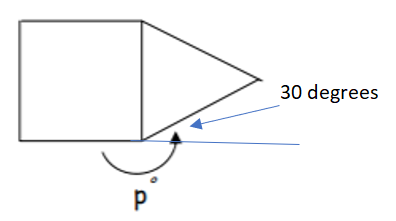
Would you like to see similar questions? Click on one of the links below:
a) 8 small boxes in the bottom layer
- Given the height of the cube is 2cm, a total of 3 high can fit in the larger box
- The bottom layer of the larger box would therefore occupy 2 x 5 x 9 = 90cm³
- But some space would be left around the base. Below is an aerial view

b) 24 small boxes
- As mentioned above, 3 layers in total
- Therefore 8 x 3 =24
- A 1 x 1 would be left as empty space as you would not be able to break a small box and fit it into the sides
Would you like to see similar questions? Click on one of the links below:
a) 68cm²
- Firstly we need to count the number of cubes. This is equal to 30
- For the 30 cubes, these can be split as follows:
-
- There are 12 cubes….the steps if you look from South East to North West angle. 2 sides visible so thats 24 in total
- Next the cubes at the side looking from South West to North East angle. There are 6 visible cubes and in total, 10 surfaces. This is the same on the other side so its 20 visible sides in total
- Finally, 6 cubes have 4 sides showing
- Total therefore is 68 sides showing
b) 3 cubes left
Easier than part a for sure!. 30 cubes in part a and 27 in part b
Would you like to see similar questions? Click on one of the links below:
a) i) A connects to D. This is the easier question of the 3
a) ii) E
For the tab connecting to B, this is through visualisation. If B is folded in , then B will be at the base of the cube as you look at it. The tab that locks with B is E
b) 6
Again visualisation.
Would you like to see similar questions? Click on one of the links below:
b)
Remember the question is asking for the incorrect answer. In this case its b)
Would you like to see similar questions? Click on one of the links below:
10
The simple formula is (5×4)/2
Where 5 represents the number of teams. 4 represents the maximum number of games each team can play against. 2 being the required denominator
Would you like to see similar questions? Click on one of the links below:
8
- Work backwards…..Mean = total of all instances/number of instances
- 6 = ? /5
- Rearrange = 6×5 = ?
- ? = 30. Given you know the total of the other days as 22, the missing day is 8
Would you like to see similar questions? Click on one of the links below:
17
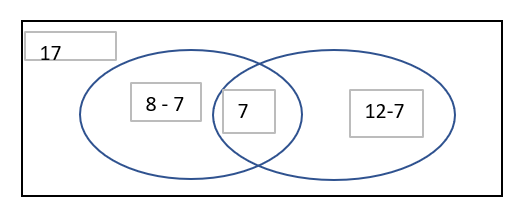
Would you like to see similar questions? Click on one of the links below:
11pence
3p + 1r = 50p
2p + 2r = 56p
Therefore…..
6p + 2r = 100p (x formula 1 by 2)
-2p-2r = -56p
-4p = -44p
=11p
Would you like to see similar questions? Click on one of the links below:
1,3,6,9
- Multiples of 3 being 3,6,9, (12 is not possible to include as the total of the cards is less than 20)
- Odd cards being 1,3,5,7,9,11
- This leaves 1,3,6 & 9 because the total of these is 19 so less than the target total of 20
Would you like to see similar questions? Click on one of the links below:
Alice = £16.50
- If their collective total is £26.50, then use Algebra to solve
- Charlie + 10 + Charlie + 3 + Charlie = £26.50
- 3Charlie + 16 = £26.50
- 3Charlie = £10.50
- Charlie = £3.50
- So Becky = £6.50
- So Alice = £16.50
Would you like to see similar questions? Click on one of the links below:
a) 72
(5+6) * 6
b) 1/2
(1/2 + 1/2) * 1/2
c) 13
(a+2) * 2 = 30
a+2=15
Therefore, rearrange. a=13
d) 5
So (a+a)*a = 2axa=50
a²=25
a=5
Would you like to see similar questions? Click on one of the links below:
a) 6
(9×4)/6 = 36/6 =6
b) 2
(36×2)/(9×4) = 2
Would you like to see similar questions? Click on one of the links below:
a)i) 1,2,3,4,6
a)ii) No
This is because 1,2,3,4,6 add up to 16 and not 12
b) 6
Because 1+2+3 = 6
c) 2,4,8,16,31,62,124,248
Apply the factor tree approach. So you get :
496 = 248 * 2
248 = 124 * 2
124 = 62 * 2
62 = 31 * 2
Highlighted numbers are Prime Numbers. So 31 x 2 x 2 x 2 x 2 = 496
Therefore, factors of 496 = 2,4,8,16,31,62,124,248
Would you like to see similar questions? Click on one of the links below:
Zara
Follow it logically step by step:
Glen > Florence
Florence > Ahmed > Zara
Oliver < Glen > Zara
Yasmin < Glen
Ahmed > Oliver
Florence < Yasmin
If Florence is less than Yasmin and given Yasmin is greater than Glen and Glen is greater than Zara, Zara is the youngest
Would you like to see similar questions? Click on one of the links below:
6
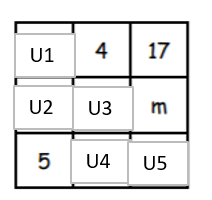
Where “U” stands for Unknown. So Unknown 1 is “U1” etc
U1+4+17 = U2+U1+5
Rearrange:
21 = u2+5
u2=16
Given this, 5+17+u3 = u2+u3+m
22 = 16 + m
m = 6
Would you like to see similar questions? Click on one of the links below:
















